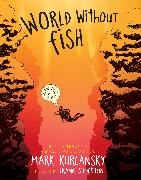Read more
Zusatztext “In his histories of cod and oysters! Mark Kurlansky described how those species once thrived in the wild! and how they were depleted. [ World Without Fish ] casts an even wider net and! with the help of superb illustrations and an interwoven graphic novel by Frank Stockton! creates a compelling narrative for young people.” — The New York Times "A wonderfully fast-paced and engaging primer on the key questions surrounding fish and the sea. Great for a classroom or as a beach read" — Paul Greenberg! author of Four Fish "Mark Kurlanksy exposes one of the most alarming but least-known catastrophes of our time: The depletion of our oceans. While raising the alarm! Mark has also given us the keys to solving the crisis! specific things that each of us can do to help restore our ocean planet." — Michael Sutton! Vice President! Monterey Bay Aquarium Informationen zum Autor Mark Kurlansky is a former commercial fisherman and New York Times bestselling author of Cod! Salt! The Big Oyster ! and other books. He's won numerous awards! including the James A. Beard Award! ALA Notable Book Award! and New York Public Library Best Books of the Year Award. He lives with his wife and daughter in New York City and Gloucester! Massachusetts. His website is www.markkurlansky.com. Frank Stockton is an artist and illustrator whose work has appeared in Esquire ! The New Yorker ! The New York Times ! and Rolling Stone . He lives in Brooklyn! New York. Klappentext Can you imagine a world without fish? It’s not as crazy as it sounds. But if we keep doing things the way we’ve been doing things! fish could become extinct within fifty years. So let’s change the way we do things! Introduction Being A Brief Outline Of The Problem A large stock of individuals of the same species, relative to the number of its enemies, is absolutely necessary for its preservation. —Charles Darwin, On the Origin of Species Most stories about the destruction of the planet involve a villain with an evil plot. But this is the story of how the earth could be destroyed by well-meaning people who fail to solve a problem simply because their calculations are wrong. Most of the fish we commonly eat, most of the fish we know, could be gone in the next fifty years. This includes salmon, tuna, cod, swordfish, and anchovies. If this happens, many other fish that depend on these fish will also be in trouble. So will seabirds that eat fish, such as seagulls and cormorants. So will mammals that eat fish, such as whales, porpoises, and seals. And insects that depend on seabirds, such as beetles and lizards. And mammals that depend on beetles and lizards. Slowly—or maybe not so slowly—in less time than the several billion years it took to create it—life on planet Earth could completely unravel. People who are in school today are lucky to have been born at a special moment in history. The Industrial Revolution, beginning in the mid-eighteenth century and continuing for the next 120 years shifted production from handcrafts to machine-made factory goods and in so doing completely changed the relationship of people to nature, the relationship of people to each other, politics, art, and architecture—the look and thought of the world. In the next fifty years, much of your working life, there will be as much change in less than half the time. The future of the world, perhaps even the survival of the planet, will depend on how well these changes are handled. And so you have more opportunities and more responsibilities than any other generation in history. One of the great thinkers of the Industrial Revolution was an Englishman named Charles Darwin. In 1859, he had published one of the most important bo...

